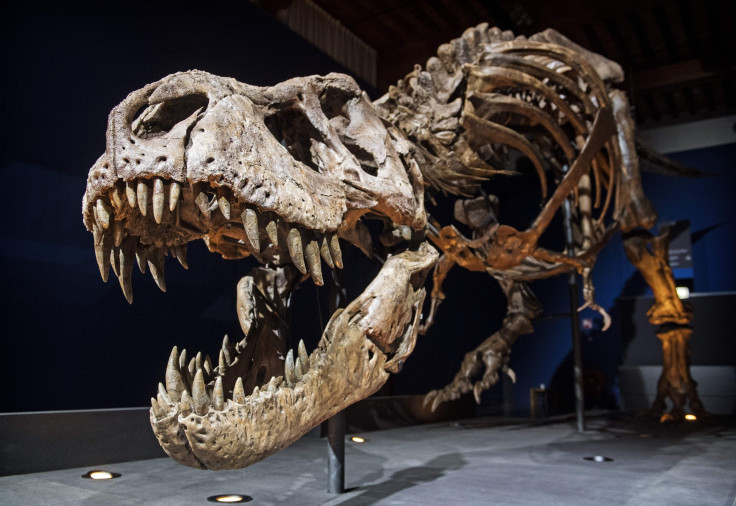Skin Fossils Show T. Rex Had Scales, Not Feathers

Tyrannosaurus rex was just as terrifying as you always imagined throughout your childhood — despite recent controversial claims that the dinosaur was covered in feathers, making for a somewhat less intimidating predator, new research seems to torpedo that idea in favor of the classic image of a monster covered in scales.
Scientists studied fossilized skin impressions from the neck, pelvis and tail that were found with a partial T. rex skeleton in Montana for their investigation, as well as those of other related dinosaurs of similar size. The study in the journal Biology Letters found those dinos all had “scaly, reptilian-like skin” before they went extinct about 65 million years ago.
Although evidence suggests other theropods had feathers, including earlier relatives of the T. rex, the study says those feathers were lost before these giant dinosaurs came along in the Late Cretaceous period, possibly as part of the natural evolution of their “gigantism” and ability to retain enough heat without plumage.
Read: Sorry, Jurassic Park Will Never Happen In Real Life
Their ability “to maintain a constant body temperature may have outweighed the advantages of insulation” that feathers would have provided, the analysis said.
The findings appear to return our understanding of the infamous T. rex to what it used to be — an image that was rooted in a fearsome, scaly appearance before the idea of a feather form came along.
If the Tyrannosaurus rex or any of the other dinos studied had feathers at all, they would have been on their backs. The scientists, however, didn’t have samples of that dorsal skin to confirm a lack of plumage, the study said. But simply having feathers on the back is unlikely since other dinosaurs with feathers had them all over.
The researchers also brought up the possibility that a young T. rex started with feathers but then grew out of them to have scaly skin. That, however, would be “a developmental switchover that, to our knowledge, would be unprecedented at any rate,” the authors said.
Agence France-Presse reported while it seems the analysis solves one mystery, it creates another. The fact that some of the Tyrannosaurus rex’s older relatives had evolved to have feathers but the T. rex itself then evolved to have scales — what looks like an evolutionary regression — begs the question of why this happened.
AFP Graphic on the Tyrannosaurus rex, which had scales and not feathers, a new study says https://t.co/XBAgSO4t1x pic.twitter.com/dMiMv29com
The study presents a possible explanation by looking at modern birds: The scales on their legs “are secondarily derived from feathers, likely acquired in response to behavior (e.g. perching, wading).” If birds can develop scales in low-down spots where they once had feathers to better support an activity like walking through shallow water, perhaps the scales on dinosaurs like the T. rex evolved from ancestral feathers, rather than representing a backpedal on their evolution.
“However, morphological evidence alone is insufficient and only future developmental studies will shed light on this hypothesis,” the scientists noted.
Read: Let’s Talk About Dinosaur Sex
This study is not the only one in recent months that appears to challenge recent controversial findings about dinosaurs. Earlier this month, researchers reported that organic material believed to have come from a T. rex, after seemingly surviving millions of years with the fossil of its leg bone, was actually the result of laboratory contamination. The organic material — fibrous proteins called collagen, which builds bones and tissues in living creatures — had ignited hope that scientists could combine it with genetic material to recreate living dinosaurs in a sort of real-life Jurassic Park. But the scientists who debunked the controversial finding suggested that ostriches the former lab had previously handled were the true source of the collagen, not the long-dead Tyrannosaurus rex.
© Copyright IBTimes 2025. All rights reserved.





















